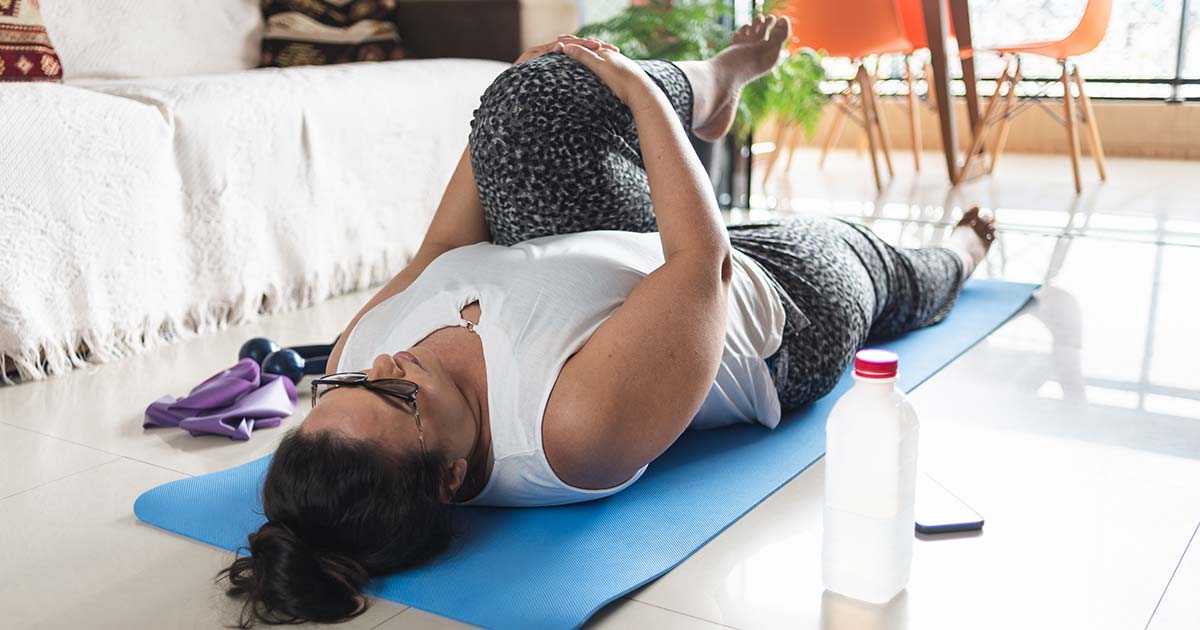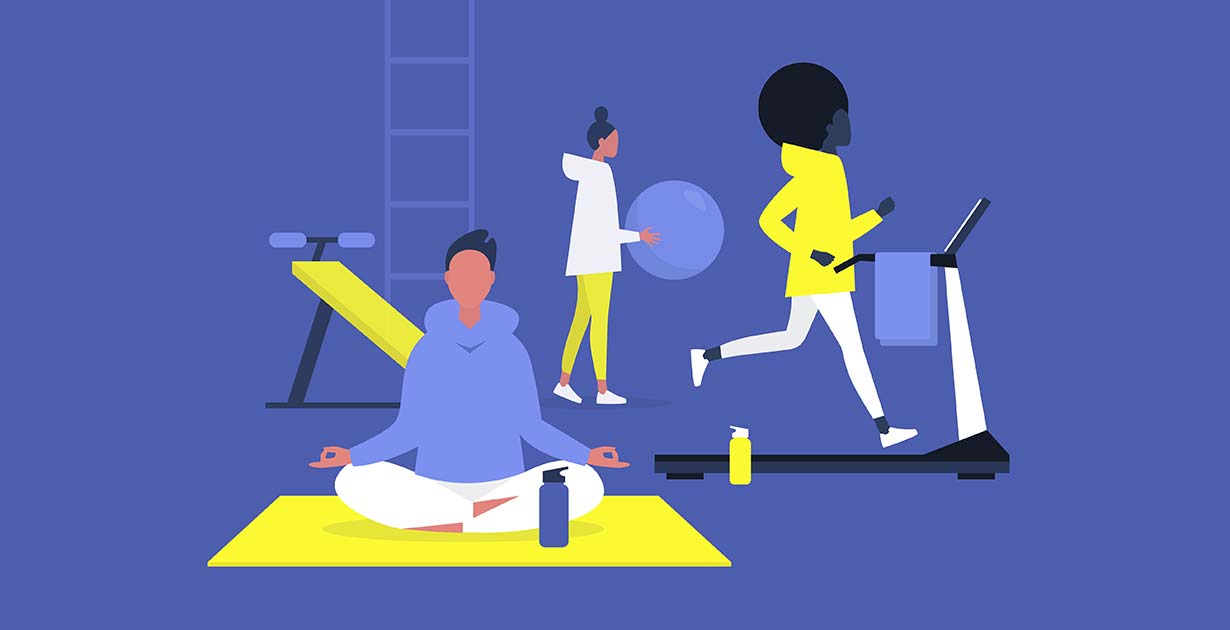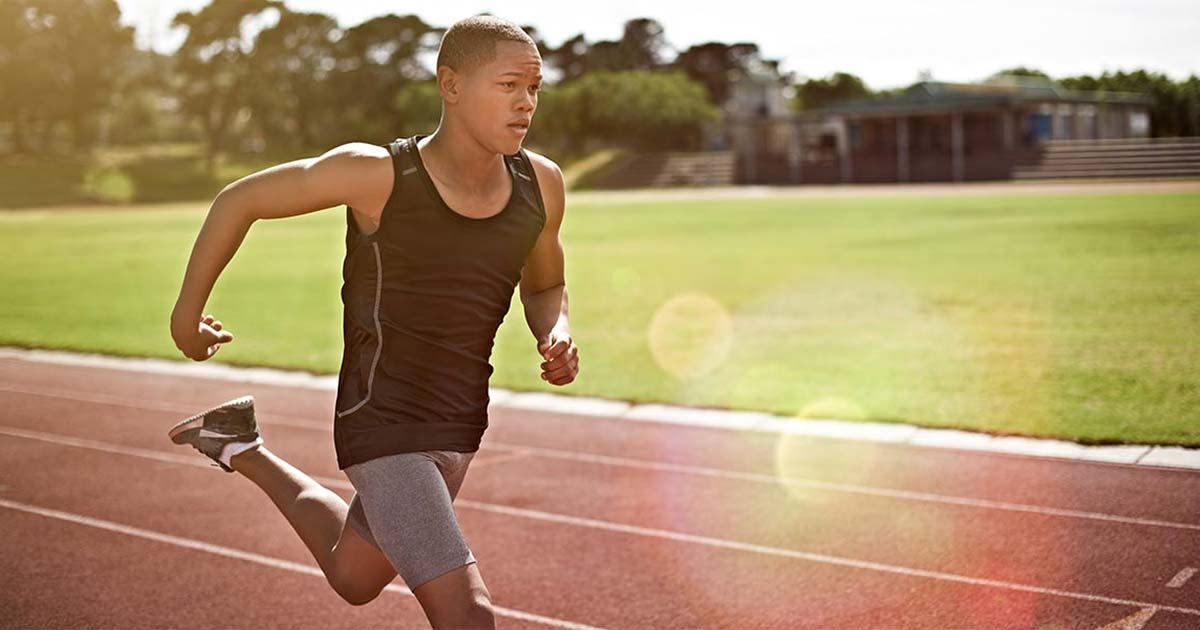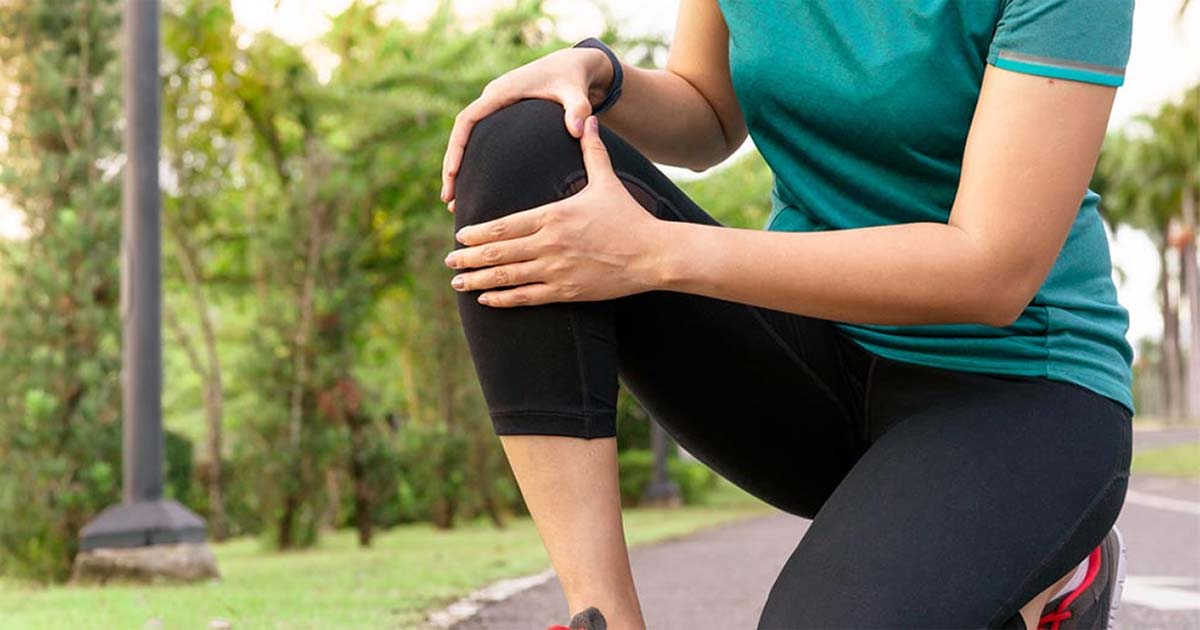
Advice to improve your movement, fitness, and overall health from the #1 in orthopedics in the U.S.
Yoga for Runners: How to Use Yoga to Improve Your Runs
HSS physical therapist Cara Ann Senicola shares how yoga can help runners improve their performance and offers a quick yoga-based warmup for runners of all levels.
Advice to improve your movement, fitness, and overall health from the #1 in orthopedics in the U.S.
HSS physical therapist Cara Ann Senicola, PT, DPT, OCS, USATF-L1, CYT, understands runners’ hesitancy to slip off their running shoes and step onto the yoga mat. She was an avid runner long before she tried yoga, and her favorite distance today is still the half-marathon. But once she learned more about how yoga could improve breathing, running form, mobility, balance, and recovery, she was sold. “I realized yoga is such a nice marriage of how the body moves and what it needs to heal,” explains Senicola, who is now a certified yoga teacher.

Here, she unpacks each of these unique benefits—and offers some simple ideas for weaving yoga into your running routine. (See her “yoga flow” warmup video and post-run cooldown stretches at the end of this article.)
Better breathing
Yoga is known for its breathing exercises, which can help you breathe more efficiently when running. Learning how to control your breathing can also calm your nerves at the start of a race, which may help you avoid other stress symptoms (such as stomach troubles).
Here’s just one example of yoga breathing: Stand tall with your collarbones wide and ribs stacked over your pelvis, then focus on expanding your ribcage in a 360-degree circle as you inhale and exhale slowly through the nose. This simple move helps activate the diaphragm, which is attached to the lower ribs and plays a major role in respiration. As part of your core, a strong diaphragm can also better support your running form.
Better running form
One reason runners get injured is because of the repeated movement of the running stride. When runners move with suboptimal form, it could set them up for running-related injuries. For example, having knees that turn in or a foot that turns out will engage different muscles and, at times, cause stress and strain. In yoga, movement is every bit as mindful as breath work. Yoga instructors explain how to place your body into each pose and how to transition to the next one. They also provide verbal cues that help students make adjustments along the way.
“Being mindful of how you move your body on the mat can help you create a new ‘muscle memory’ in your brain,” says Senicola. “Over time, this healthier movement pattern will become ingrained, and you won’t have to think about it anymore.”
Better mobility
Yoga is a mobility exercise. It can recruit many different joints—often at the same time—within a single class. Using yoga as a mobility tool also helps your body move in ways besides that forward-motion pattern of running. By expanding the planes in which you move, you can also become better able to pivot when something unexpected (like a rock, a root or another runner) gets in your way.
Better balance
If you’re usually running on a smooth surface, this may be less of an issue. But if you do trail runs—or have to negotiate curbs and potholes—better balance can help you avoid an ankle sprain. “Yoga trains your muscles to keep your center of mass over whatever body part is on the ground,” says Senicola. Sometimes that’s one foot; other times it’s your hands. Being barefoot in yoga also teaches the muscles in your feet how to stabilize you without the support of a sneaker. (“I don’t advocate barefoot running,” she adds.)
Better recovery
Many runners would like to (and do) run every day. For shorter distances of a few miles a day or so, that may be fine. But too much of a good thing can lead to overuse injuries or burnout. Senicola recommends swapping one day of running with yoga and another day with a low-impact form of cardio, like swimming or rowing. She also advises adding a few days of strength training to the mix. “If you are strong and can control your range of motion, that’s going to protect you when you run,” she says. “Cross-training is the homework you do to pass the test—or run the race.”
Tips for finding a class you like
Trying out yoga classes (and teachers) is like trying on running shoes: The first few may not be the perfect fit, but that doesn’t mean you should give up. In addition to noticing how you feel—mentally, physically, spiritually—in the class, look for signs of a good instructor. You want a teacher who offers some level of detail, such as which way your head and feet should be pointing, which muscles are working in the pose, which muscles should be relaxed and when to inhale and exhale. It’s also best to be in a class that suits your skill level and/or where the teacher offers different options for students not ready to try a particular pose or movement. Finally, she recommends mixing it up and trying different styles of yoga and different teachers so that your body is challenged differently each time.
“We have such little time in our day to devote to our workouts, and we want a good return on investment,” says Senicola. “By helping runners keep doing what they love—and doing it better—its return is tenfold.
Published 6/14/2021


